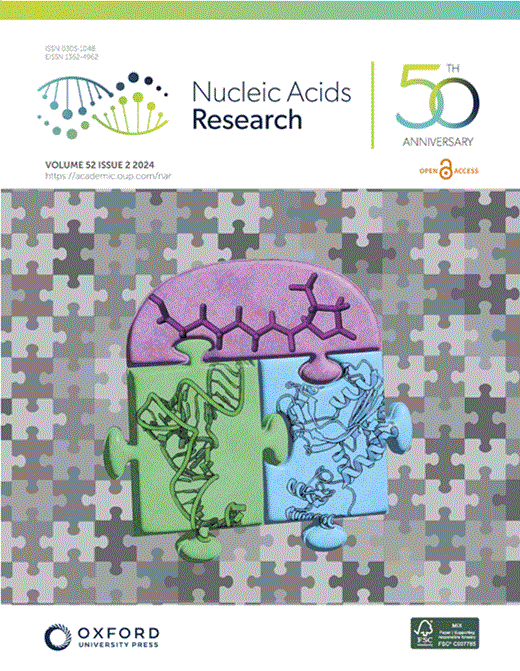Identification of a minimal Alu domain required for retrotransposition
IF 16.6
2区 生物学
Q1 BIOCHEMISTRY & MOLECULAR BIOLOGY
引用次数: 0
Abstract
Alu elements are primate-specific retrotransposons that comprise ∼11% of human DNA. Alu sequences contain an internal RNA polymerase III promoter, and the resultant Alu RNA transcripts mobilize by a replicative process termed retrotransposition, which requires the long interspersed element-1 open reading frame 2-encoded protein (ORF2p). Here, we used HeLa cell-based retrotransposition assays to define a minimal Alu domain necessary for retrotransposition. We demonstrate that Alu transcripts expressed from a cytomegalovirus (CMV) RNA polymerase II promoter can efficiently undergo retrotransposition. The use of an external CMV promoter to express Alu RNA allowed us to construct separation-of-function mutations to examine the effects of large deletions within the Alu sequence on retrotransposition. Deletion mutagenesis demonstrated that a 46-nucleotide (nt) domain located at the 5′ end of the Alu RNA transcript is necessary for retrotransposition. Consistent with current models, the 46-nt 5′ Alu domain associates with SRP9/14 in HeLa-HA cell extracts and can promote retrotransposition in HeLa-HA cells. We propose that the 46-nt 5′ Alu domain forms a discrete structure that allows for SRP9/14 binding and ribosomal association, thereby allowing the Alu poly(A) tract to compete with the L1 poly(A) tail for ORF2p RNA binding to mediate its retrotransposition.反转位所需的最小Alu域的识别
Alu元件是灵长类特有的逆转录转座子,占人类DNA的11%。Alu序列包含一个内部RNA聚合酶III启动子,由此产生的Alu RNA转录本通过一个称为逆转录的复制过程被调动,这需要长穿插元件-1开放阅读框2编码蛋白(ORF2p)。在这里,我们使用基于HeLa细胞的反转录转位测定来定义反转录转位所需的最小Alu结构域。我们证明了从巨细胞病毒(CMV) RNA聚合酶II启动子表达的Alu转录本可以有效地进行反转录转位。利用外部CMV启动子表达Alu RNA使我们能够构建功能分离突变,以检查Alu序列中大缺失对反转录转位的影响。缺失突变表明,位于Alu RNA转录物5 '端的46个核苷酸(nt)结构域是逆转录所必需的。与目前的模型一致,46-nt 5 ' Alu结构域在HeLa-HA细胞提取物中与SRP9/14结合,并能促进HeLa-HA细胞的逆转录。我们提出46-nt 5 ' Alu结构域形成一个离散结构,允许SRP9/14结合和核糖体结合,从而允许Alu poly(a)通道与L1 poly(a)尾部竞争ORF2p RNA结合,介导其逆转录转位。
本文章由计算机程序翻译,如有差异,请以英文原文为准。
求助全文
约1分钟内获得全文
求助全文
来源期刊

Nucleic Acids Research
生物-生化与分子生物学
CiteScore
27.10
自引率
4.70%
发文量
1057
审稿时长
2 months
期刊介绍:
Nucleic Acids Research (NAR) is a scientific journal that publishes research on various aspects of nucleic acids and proteins involved in nucleic acid metabolism and interactions. It covers areas such as chemistry and synthetic biology, computational biology, gene regulation, chromatin and epigenetics, genome integrity, repair and replication, genomics, molecular biology, nucleic acid enzymes, RNA, and structural biology. The journal also includes a Survey and Summary section for brief reviews. Additionally, each year, the first issue is dedicated to biological databases, and an issue in July focuses on web-based software resources for the biological community. Nucleic Acids Research is indexed by several services including Abstracts on Hygiene and Communicable Diseases, Animal Breeding Abstracts, Agricultural Engineering Abstracts, Agbiotech News and Information, BIOSIS Previews, CAB Abstracts, and EMBASE.
 求助内容:
求助内容: 应助结果提醒方式:
应助结果提醒方式:


